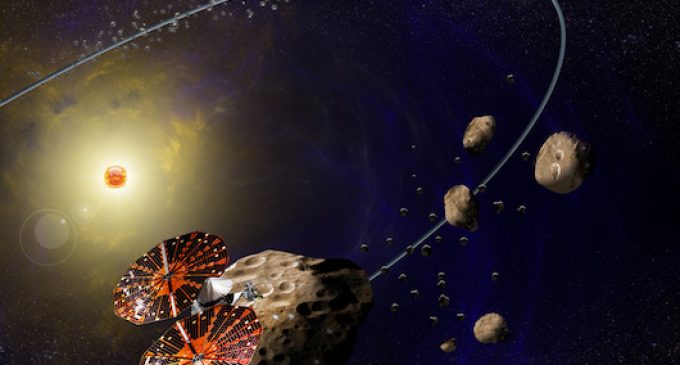The Beatles’ Ties To Scientific Discovery And NASA | uDiscover

When The Beatles released Sgt. Pepper’s Lonely Hearts Club Band fifty years ago, they inspired an entire generation of artists, musicians and, as it turns out, scientists. One of the album’s most iconic songs, ‘Lucy In The Sky With Diamonds’ was immediately branded a psychedelic anthem, though John Lennon said it was inspired by a drawing his 3 year-old son Julian made of his classmate Lucy and the whimsical poeticism of Alice in Wonderland and The Wind in the Willows.“When we sat down to write the song at John’s house, Julian’s drawing of Lucy and the stars was what inspired us,” said Paul McCartney. “At the top of the drawing Julian had written in childlike script, ‘Lucy In The Sky With Diamonds.’”
Almost a decade later, the song would become the backdrop to one of the biggest scientific discoveries of our time. On 24 November 1974, a team of scientists was digging in an isolated area in the Afar region of Ethiopia when paleoanthropologist Donald Johanson spotted a small fossil elbow bone. He immediately recognised it as coming from a human ancestor and soon discovered more parts that made up almost a complete hominin skeleton.
Found at a site where the sediments were known to be 3.2 million years old, it was clear that this discovery was cause for celebration.
Later that night as the team marveled in their breakthrough, Johanson played a Beatles cassette that he had packed, and ‘Lucy in the Sky with Diamonds’ came on. The skeleton they had found was already assumed to be female, due to its smaller size, and so when expedition member Pamela Alderman suggested they call it “Lucy,” the name immediately stuck.
“All of a sudden,” said Johanson, “she became a person.” As the most ancient early human – or hominin – ever found at that time, it was clear that Lucy was one of the most important fossils ever discovered.
Just as Lucy became the key to providing insight into humanity’s evolution, the name would also inspire a mission seeking to shed light on our planetary origins and the formation of the solar system. When it came time to name the new NASA space mission that would explore the fossilized materials that make up Jupiter’s Trojan asteroids in 2013, the team decided name the spacecraft Lucy after the famous fossil and song.
“These asteroids really are like diamonds in the sky in terms of their scientific value for understanding how the giant planets formed and the solar system evolved,” said the mission’s Principal Investigator, Harold Levison of the Southwest Research Institute (SwRI) in Boulder, Colorado.
These throngs of Trojan asteroids that surround Jupiter are believed to contain remnants of the primordial material that formed the outer planets and serve as an important clue to the birth of our Solar System more than 4 billion years ago. Lucy, a robotic spacecraft, is set to launch in October 2021 and is expected complete a 12-year journey to seven different asteroids.
Upon hearing about the NASA mission, Ringo Starr commented, “How great it would be for Lucy to go back in the sky with diamonds? Peace & Love, Ringo.”
As for connection between pop culture and sophisticated space missions, Keith Noll, Project Scientist for Lucy at NASA’s Goddard Space Flight Center in Greenbelt, Maryland said this: “We are conscious of all the ways the name we chose for this mission has different cultural meanings. If Lucy resonates with someone, brings them in and gets them asking questions, that’s just great.”
For more information about NASA’s Lucy mission visit www.nasa.gov/lucy and visit our Beatles artist page.
Source: The Beatles’ Ties To Scientific Discovery And NASA | uDiscover


 Found at a site where the sediments were known to be 3.2 million years old, it was clear that this discovery was cause for celebration.
Found at a site where the sediments were known to be 3.2 million years old, it was clear that this discovery was cause for celebration.

There are no comments at the moment, do you want to add one?
Write a comment